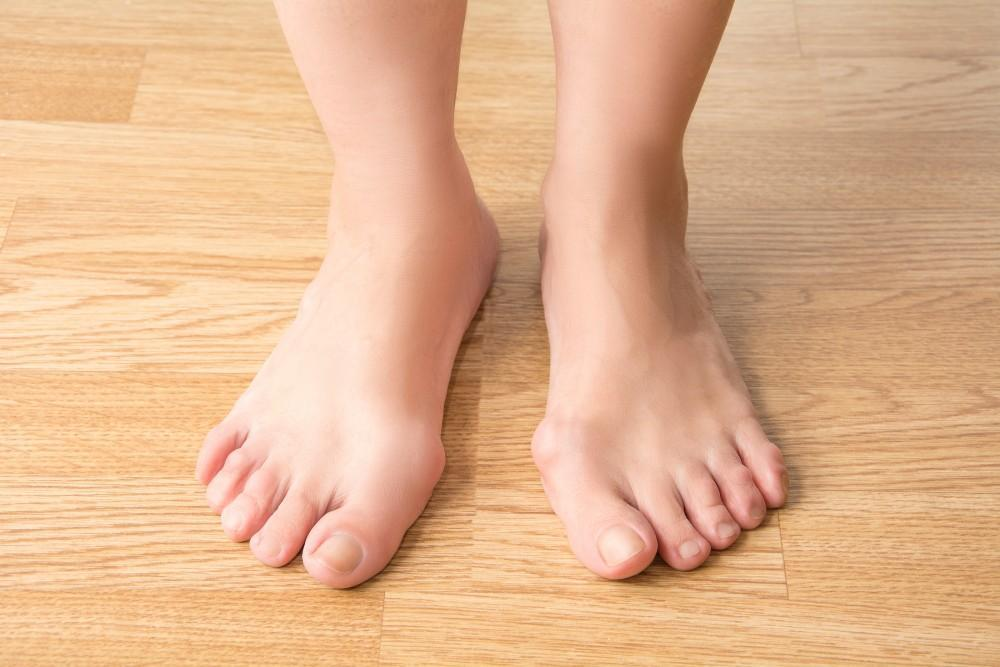
Causes of Tailor's Bunion: Information about the Disease

Like the hallux from which the deformity derives its name, tailor’s bunion – or bunionette – is a lateral expansion of the foot at the base of the fifth toe. On the other hand, tailor’s bunion is a prominence on the outside of the foot and it may be sensitive, and even sting and burn.It is important to know the cause of tailor’s bunion so as to prevent or at least manage this foot problem.
A tailor’s bunion is described as such since historical tailors often sat cross legged for extended periods of time which created stress on the outer aspect of the foot. Hence, it was possible to build a bony spur from this pressure that was always exerted on the joints of a person for an extended period. In today’s generation the condition is more closely related to biomechanical dysfunction and shoe wear than statism.
Main causes of Tailor’s Bunion In Shod:
One such disorder that is scary to the youth is Tailor’s bunion which has a lifelong impact in one’s life.Some of the causes of tailor’s bunion include the following:Genetic – caused by the exposure to the environment or due to the behaviour of an individual. Now let’s take a look at the primary Causes of tailor’s bunion:
1. Genetics:
They also attributed that genetics is the primary reason for tailor’s bunion. A bunion can be hereditary or can be in reaction to another deformity of the foot; many patients get a bunion or possess a bias toward foot deformities. Valgus foot deformity is congenital, and other congenital disorders that involve structural deformities of the foot such as first metatarsal shift put one at risk of developing this deformity.
2. Foot Structure:
However, one of the primary and final reasons for a tailor’s bunion is foot structure as well. Recorded data and facts show that people with improper structure of their feet are more likely to develop this particular type of condition, people with flat feet, high arch feet or people with over-pronating feet. These structural concerns invariably place more pressure on the side of the foot and with time will lead to a formation of a bunionette.
3. Fitting Shoes:
Historically, people have noted that narrow shoes, shoes that are tight or pointed, cause a tailor’s bunion. Those as described by shoes that cover the toes together with applying enhanced pressure on the inner surface of the shoe will cause inflammation and pain. Endurance of closed shoes particularly the high heeled, and shoes with narrow front area or toe section also develop both bunion and tailor’s bunion.
4. Foot Injuries:
Abnormalities of the foot, whether osseous or soft tissue in origin, lead to positioning of the medial cuneiform in a lateral and /or anterior position developing tailor’s bunion. A bunionette is developed when the pressure or strain is consistently applied at the joint of the singular metatarsal bone of the base of the little toe.
5. Overuse or Repetitive Stress:
Other people who are more at risk than others when it comes to Causes of tailor’s bunion are those who use their shoes to provide repeated force on the outward aspect of the foot. Any individual who requires to spend most of their time standing like runners, dancers, and many others may experience pressure on that region and likely to experience pain with a bony growth.
How to treat tailor’s bunion?
Shoe wear should be advised in treatment of the tailor’s bunion and management of deformities that may have contributed to this syndrome. Strengthening of the shoe that makes a proper space for the toes will prevent force exerted on the outer side of the foot. At other times the child may require special shoes, orthopaedic shoes or foot pads to off-load the area of stress on feet and balance the load.
It is recommended, however, that a podiatrist should be sought whenever the pain becomes worse. It is worthwhile to use ice packs for the inflammation and non steroidal anti inflammatory drugs which have recently been prescribed only in some instances while in the worst cases there can be only surgical treatment.
FAQs:
Q1: Can tailor’s bunions be left untreated?
A: That is wrong as a tailor’s bunion will not cure itself without attention being paid to it. Basic check of the condition often means changing one’s style, to get proper shoes or even visit a doctor.
Q2: We ask questions such as; what horrible symptoms are associated with tailor’s bunions; is it genetic?
A: Nonetheless, tailor’s bunion abnormalities can be hereditary while their cases can pass from generation to generation. Everyone knows that every deformity of the foot is hereditary, and therefore you are ill-protected from developing one.
Q3: What may help decrease the discomfort associated with a tailor’s bunion?
A: High heels also cause heel pain; thus, correct footwear, shoe insertion, using ice on the area, mild pain relievers and non-narcotic anti-inflammatory drugs all relieve heel pain. In case pain persists, consult a podiatrist for additional management and for selection of all forms of treatment.
Q4: We hear a lot about ‘tailor’s bunions’, but are they brought on by high heels?
A: Of course high heels exert pressure at the outer side of the foot and due to this pressure, a tailor’s bunion is developed.
Related Courses and Certification
Also Online IT Certification Courses & Online Technical Certificate Programs

